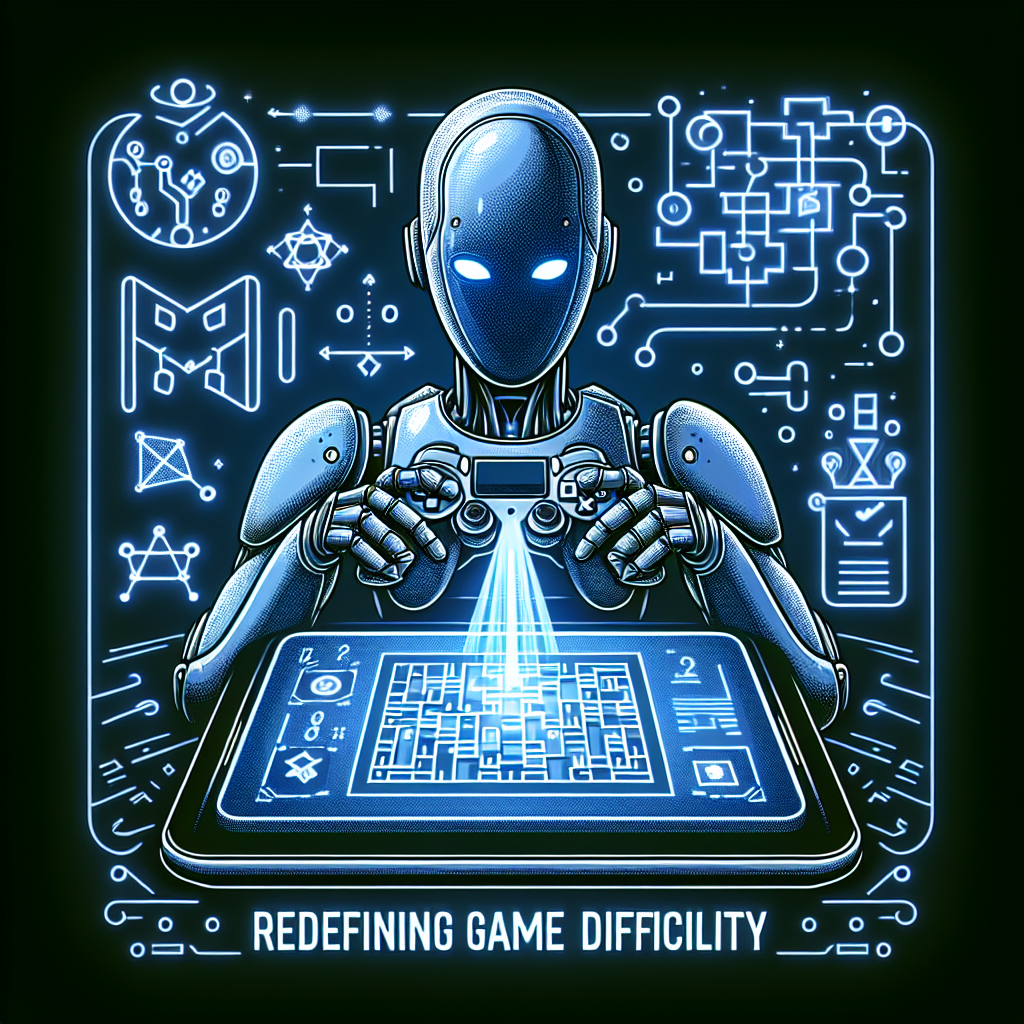In recent years, artificial intelligence (AI) has been revolutionizing various industries, including the gaming industry. One of the most significant impacts of AI in gaming is its ability to redefine game difficulty. With the advancement of AI technology, game developers are now able to create more dynamic and challenging gameplay experiences that cater to individual player skill levels.
AI algorithms can analyze player behavior in real-time, adjusting the difficulty of the game to provide a more personalized and engaging experience. This has led to the development of games that are not only more challenging but also more fair and balanced, leading to increased player satisfaction and retention.
In this article, we will explore how AI is redefining game difficulty and the impact it is having on the gaming industry as a whole.
1. Adaptive Difficulty Levels
One of the key ways AI is redefining game difficulty is through adaptive difficulty levels. Traditionally, games have offered static difficulty settings that players can choose from at the beginning of the game. However, with AI, game developers can now create games that adjust the difficulty level in real-time based on the player’s skill level and performance.
For example, in a first-person shooter game, the AI can analyze the player’s shooting accuracy, reaction time, and overall gameplay performance to dynamically adjust the number of enemies, their behavior, and the level of challenge presented to the player. This ensures that the game remains challenging and engaging for players of all skill levels, from casual gamers to hardcore enthusiasts.
2. Personalized Challenges
AI in gaming also allows for the creation of personalized challenges that cater to individual player preferences and playstyles. By analyzing player behavior and preferences, AI algorithms can create custom challenges and objectives that are tailored to each player’s unique gaming style.
For example, in a role-playing game, the AI can generate side quests and missions that align with the player’s chosen character class, skills, and playstyle. This not only makes the game more engaging and immersive but also ensures that players are constantly challenged and motivated to improve their skills.
3. Dynamic Enemy Behavior
Another way AI is redefining game difficulty is through the implementation of dynamic enemy behavior. In traditional games, enemy AI is often predictable and follows pre-programmed patterns, making it easier for players to anticipate their actions and overcome challenges.
With AI, game developers can create enemies that adapt and learn from the player’s behavior, making them more challenging and unpredictable. This creates a more immersive and dynamic gameplay experience that keeps players on their toes and forces them to think strategically and adapt to changing circumstances.
4. Procedural Generation
AI algorithms can also be used to generate levels, environments, and game content procedurally, leading to a more diverse and challenging gameplay experience. Procedural generation allows for the creation of endless variations of levels and challenges, ensuring that players are constantly faced with new and unique obstacles to overcome.
For example, in a platformer game, AI can generate randomly generated levels with different obstacles, enemies, and challenges each time the player plays. This not only keeps the game fresh and exciting but also increases replay value and encourages players to explore and experiment with different strategies.
5. Balancing Difficulty
AI can also be used to balance the difficulty of the game to ensure that it is challenging but not frustrating for players. By analyzing player feedback and performance data, AI algorithms can adjust the difficulty curve of the game to provide a more balanced and enjoyable experience.
For example, if a particular level or boss fight is proving to be too difficult for a large number of players, the AI can adjust the enemy behavior, health, or attack patterns to make it more manageable. This ensures that players are able to progress through the game without getting stuck or feeling discouraged, leading to a more positive and rewarding gaming experience.
FAQs
Q: How does AI analyze player behavior in real-time?
A: AI algorithms use machine learning and data analytics techniques to analyze player behavior in real-time. This involves collecting data on player actions, decisions, and performance metrics, and using this information to generate insights and make predictions about the player’s skill level and preferences.
Q: Can AI make games too difficult for casual gamers?
A: AI algorithms can be programmed to adjust the difficulty level based on the player’s skill level and performance, ensuring that the game remains challenging but not overly difficult for casual gamers. By analyzing player behavior and adapting the gameplay experience, AI can provide a more personalized and engaging experience for players of all skill levels.
Q: How does AI create dynamic enemy behavior?
A: AI algorithms can be programmed to create enemies that adapt and learn from the player’s behavior. This involves using machine learning techniques to analyze player actions and decisions, and adjusting the enemy AI to respond in real-time. This creates a more challenging and unpredictable gameplay experience that keeps players engaged and on their toes.
Q: Can AI be used to create unfair advantages for players?
A: AI algorithms can be programmed to provide hints, tips, and assistance to players to help them overcome challenges and progress through the game. However, game developers must be careful to ensure that these advantages do not make the game too easy or take away from the sense of accomplishment and satisfaction that comes from overcoming challenges on their own.
In conclusion, AI is redefining game difficulty by providing more dynamic, personalized, and challenging gameplay experiences for players. By analyzing player behavior, adapting difficulty levels, creating dynamic enemy behavior, and balancing the difficulty curve, AI is reshaping the way games are designed and played. As AI technology continues to advance, we can expect to see even more innovative and engaging gameplay experiences that cater to players of all skill levels and preferences.

